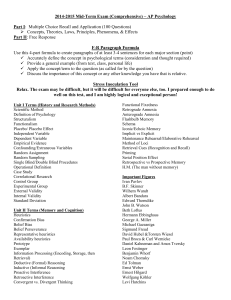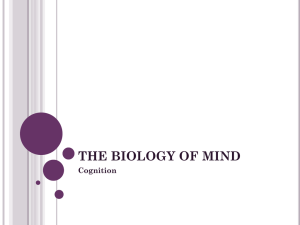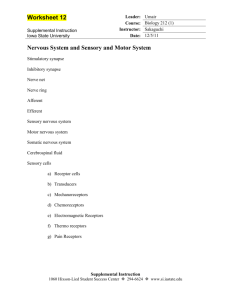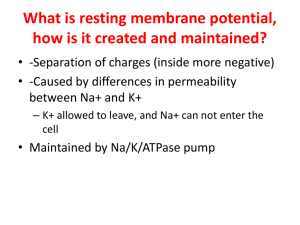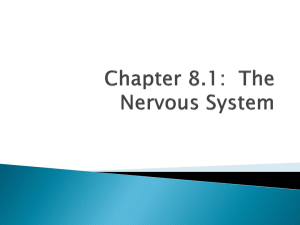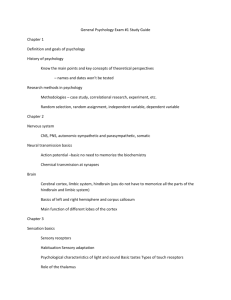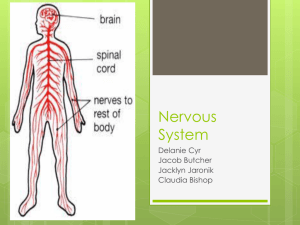t1review
advertisement
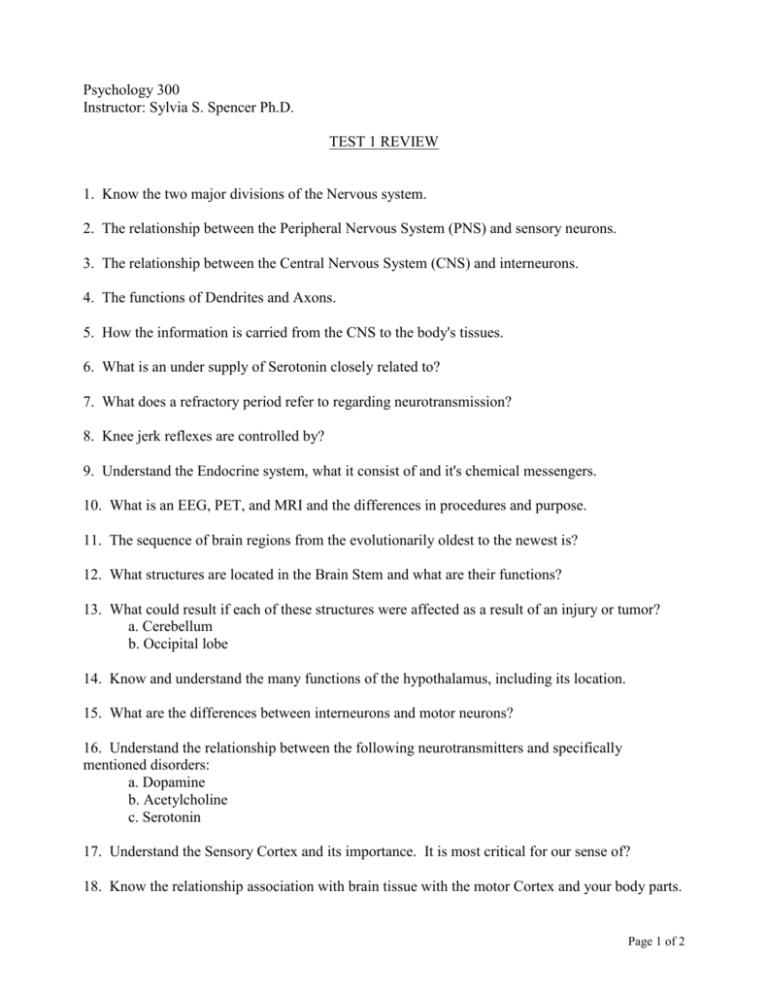
Psychology 300 Instructor: Sylvia S. Spencer Ph.D. TEST 1 REVIEW 1. Know the two major divisions of the Nervous system. 2. The relationship between the Peripheral Nervous System (PNS) and sensory neurons. 3. The relationship between the Central Nervous System (CNS) and interneurons. 4. The functions of Dendrites and Axons. 5. How the information is carried from the CNS to the body's tissues. 6. What is an under supply of Serotonin closely related to? 7. What does a refractory period refer to regarding neurotransmission? 8. Knee jerk reflexes are controlled by? 9. Understand the Endocrine system, what it consist of and it's chemical messengers. 10. What is an EEG, PET, and MRI and the differences in procedures and purpose. 11. The sequence of brain regions from the evolutionarily oldest to the newest is? 12. What structures are located in the Brain Stem and what are their functions? 13. What could result if each of these structures were affected as a result of an injury or tumor? a. Cerebellum b. Occipital lobe 14. Know and understand the many functions of the hypothalamus, including its location. 15. What are the differences between interneurons and motor neurons? 16. Understand the relationship between the following neurotransmitters and specifically mentioned disorders: a. Dopamine b. Acetylcholine c. Serotonin 17. Understand the Sensory Cortex and its importance. It is most critical for our sense of? 18. Know the relationship association with brain tissue with the motor Cortex and your body parts. Page 1 of 2 19. What is the field of Biological Psychology? What are some of the areas of research and concerns? 20. Heart racing, perspiration and other similar reactions are triggered by which nervous system? 21. And Limbic system, its shape, location, formulating new memory and other functions. 22. Have knowledge of the 4 lobes and their areas of specialty and resulting effects of damage affecting them. 23. The location and some responsibilities of the Cerebellum. 24. Understand the definition and process of the words Sensation, Perception, and Sensory Adaptation. 25. What does the word Accommodation refer to? 26. What is the process that enables us to see? 27. What are the following structures and the purpose of the Retina, Optic Nerve, Iris and lens? 28. What are Rods and Cones and their importance? 29. Learn the process that enables us to hear. 28. Learn and understand the following importance and structures: a. Amplitude. b. Pitch c. Cochleae d. Auditory Nerve e. Inner Ear f. Sound wave vibrations g. Semicircular Canal. 29. Locations of where types of hearing loss occur. 30. Basic 4 senses of touch. 31. Gain knowledge of the Gate Control Theory. 32. Know about taste receptors. 33. What is your chemical sense and what is the name of the receptors? 34. What enables us to the awareness of our body position and movements of body parts and where are these receptors located? Page 2 of 2


